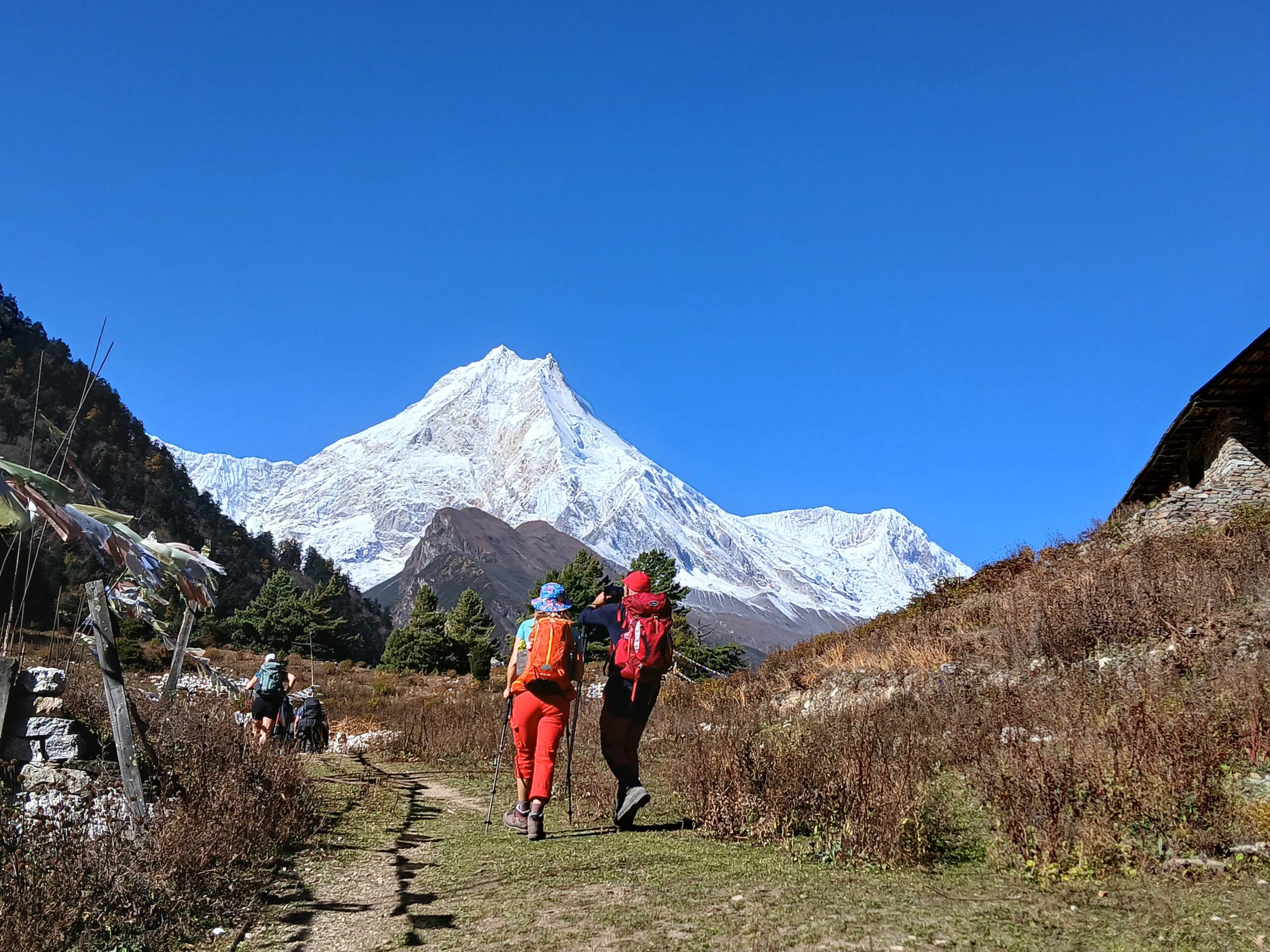Embarking on the Everest Base Camp Trek is more than just a journey—it’s a life-altering adventure that brings you face-to-face with the towering grandeur of the Himalayas. Towering peaks, ancient monasteries, Sherpa villages, and the legendary trails that lead to the base of the world’s highest mountain make this trek one of the most sought-after experiences on Earth.
Whether you are a seasoned hiker or an adventurous beginner, the Everest Base Camp Trek offers a profound encounter with nature, culture, and personal endurance. With Sole Encounters Trekking, you’ll be guided through every breathtaking step of this epic expedition, ensuring safety, insight, and an unforgettable Himalayan adventure.
Why Choose the Everest Base Camp Trek?
The Allure of Mount Everest
The Everest Base Camp Trek leads adventurers to the foot of Mount Everest (8,848.86 meters), the highest peak on the planet. Reaching the base camp at 5,364 meters is a milestone achievement for trekkers worldwide. This trail is not just about the destination—it’s about the incredible journey through high-altitude landscapes, dense forests, and glacial rivers.
Rich Cultural Experiences
The trek passes through vibrant Sherpa villages such as Namche Bazaar, Tengboche, and Dingboche. These settlements offer unique opportunities to engage with local customs, taste traditional Himalayan cuisine, and visit ancient monasteries that exude spiritual serenity.
Panoramic Himalayan Views
Along the trail, you’re constantly greeted by some of the world’s most iconic peaks—Lhotse, Nuptse, Ama Dablam, Thamserku, and of course, Everest itself. The view from Kala Patthar, a popular vantage point near base camp, offers an unparalleled panorama of Everest and the surrounding peaks.
Best Time for the Everest Base Camp Trek
Spring (March to May)
Spring is a favorite season for the Everest Base Camp Trek, with blooming rhododendrons and clear skies. Temperatures are moderate, and visibility is excellent, making it an ideal time for photography and long days of trekking.
Autumn (September to November)
Post-monsoon autumn months are another prime season. The air is crisp and clean, with spectacular mountain views and festive vibes, as several cultural celebrations like Mani Rimdu occur in this period.
Route Overview: Everest Base Camp Trek Itinerary
Day 1–2: Arrival and Kathmandu to Lukla
Your adventure begins in Kathmandu, followed by a thrilling mountain flight to Lukla. The trek kicks off with a scenic hike to Phakding along the Dudh Koshi River.
Day 3–4: Phakding to Namche Bazaar
You’ll ascend through pine forests and cross iconic suspension bridges before reaching Namche Bazaar, the heart of the Khumbu region. Spend a day here for acclimatization and exploration.
Day 5–6: Namche to Tengboche
Trek to Tengboche Monastery, a spiritual highlight of the Everest Base Camp Trek. Enjoy the serenity and the backdrop of Ama Dablam.
Day 7–8: Dingboche and Acclimatization
As altitude increases, acclimatization becomes essential. Dingboche offers gentle acclimatization hikes with views of Lhotse and Island Peak.
Day 9–10: Lobuche to Everest Base Camp
Cross moraines and glaciers to reach Gorakshep and finally the historic Everest Base Camp. Celebrate your achievement as you stand at the foot of the mighty Everest.
Day 11–13: Kala Patthar and Descent
A pre-dawn hike to Kala Patthar offers the most breathtaking views of Everest. Then begin your descent through familiar trails to Lukla, and fly back to Kathmandu.
Trekking Difficulty and Fitness Requirements
The Everest Base Camp Trek is moderately challenging and requires a good level of fitness. Daily hikes range from 5 to 8 hours, often at high altitudes. Prior training with cardio exercises, strength training, and altitude preparation is highly recommended.
No technical climbing is involved, but mental resilience and determination are key. With expert guidance from Sole Encounters Trekking, your journey is both safe and enjoyable.
Accommodation and Food on the Trail
Teahouse Lodging
Teahouses provide basic but comfortable accommodations with shared rooms, warm meals, and cozy atmospheres. Most offer charging ports, hot showers (at extra cost), and Wi-Fi in some locations.
Nutritious Meals
Expect warm, carb-rich meals such as dal bhat, noodles, soups, and momos. Hydration and balanced nutrition are crucial at high altitudes, and Sole Encounters Trekking ensures hygienic and wholesome meal options throughout the trip.
Safety and Acclimatization
Altitude sickness is a significant concern on the Everest Base Camp Trek. Adequate acclimatization days, slow ascents, and proper hydration are vital. Our guides are trained in first aid and equipped with oxygen and altitude medication if needed.
Trekking with a trusted company like Sole Encounters Trekking ensures safety protocols, emergency support, and real-time monitoring to keep you protected throughout your journey.
Responsible Trekking and Sustainability
Leave No Trace
The Himalayas are a fragile ecosystem. Trekkers are encouraged to follow “Leave No Trace” principles by minimizing waste and using refillable water bottles.
Support Local Communities
By choosing Sole Encounters Trekking, you directly support local guides, porters, and businesses in the Khumbu region. Our treks are ethically operated with fair wages and environmental consciousness.
What to Pack for the Everest Base Camp Trek
Essentials include:
- Waterproof trekking boots
- Thermal layers and down jacket
- Sleeping bag (-10°C or colder)
- Headlamp, sunscreen, and sunglasses
- Reusable water bottle and purification tablets
- Personal medical kit and snacks
A detailed gear list will be provided by Sole Encounters Trekking upon booking.
Why Trek with Sole Encounters Trekking?
With over a decade of Himalayan trekking experience, Sole Encounters Trekking specializes in safe, personalized, and ethical adventure travel. Our expert guides, small group sizes, and attention to detail ensure that your Everest Base Camp Trek is seamless and unforgettable.
We focus on creating enriching travel experiences that go beyond sightseeing. From cultural insights to altitude support, we’ve got every step covered.
Conclusion: Begin Your Everest Journey Today
The Everest Base Camp Trek is not just a trek—it’s a personal triumph, a cultural immersion, and a breathtaking journey through one of Earth’s most extraordinary landscapes. Let Sole Encounters Trekking be your trusted companion in making this once-in-a-lifetime dream a reality. Explore our homepage now to stay ahead in the digital world.
Frequently Asked Questions (FAQs)
1. How long does the Everest Base Camp Trek take?
The standard Everest Base Camp Trek takes about 12–14 days, including acclimatization and return to Kathmandu. However, itineraries can be customized.
2. Do I need prior trekking experience?
No prior trekking experience is required, but good physical fitness and some preparation are essential for a successful Everest Base Camp Trek.
3. What permits are required for the trek?
Trekkers need the Sagarmatha National Park Entry Permit and the Khumbu Pasang Lhamu Rural Municipality Permit. Sole Encounters Trekking arranges all required permits for you.



